The 3rd board meeting of the International Human Phenome Consortium (IHPC) was held online on November 19. 21 IHPC board members and leading scientists from 19 countries joined the conference to discuss the next move for the Human Phenome Project (HPP).
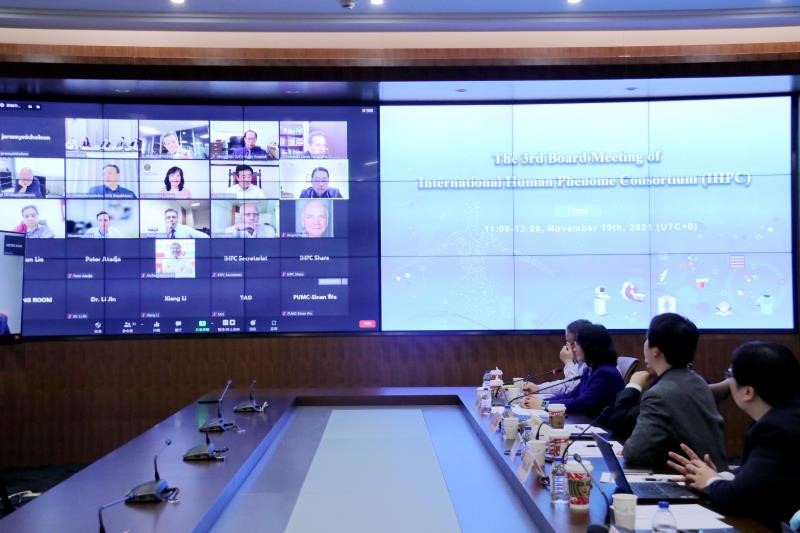
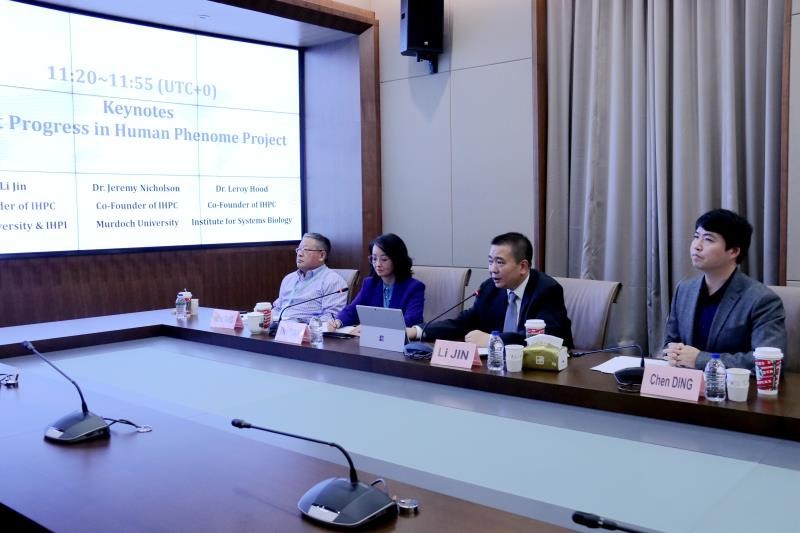
According to the vote of IHPC board meeting, Professor and Director of Division of Nuclear Medicine at the Medical University of Vienna Marcus Hacker, Professor at Faculty of Medicine and Health Sciences at UCSI University Hoh Boon-Peng, and Vice President at the University of Chile and Professor at the Millennium Institute of Immunology and Immunotherapy Flavio S. Onfray were elected as members of the board. With scholars from 23 institutions of 20 countries across 6 continents now, IHPC has become a diverse global community committed to collaborative innovation on human phenome studies.

Li Jin

Leroy Hood

Jeremy Nicolson
As the IHPC co-founders, Li Jin, president of Fudan University and director of International Human Phenome Institutes (Shanghai), China, Leroy Hood, founder of Institute for Systems Biology, USA, and Jeremy Nicolson, executive director of the Australian National Phenome Centre, Australia, made keynote speeches on the latest progress of HPP over the past year.

Jean Krutmann
The draft entitled “Principles of Trans-Border Data Sharing and Openness of the Human Phenome Project”, introduced by Jean Krutmann, director of IUF-Leibniz Research Institute for Environment Medicine, Gernmany, on behalf of Subcommittee of data sharing was passed as academic consensus by the board meeting unanimously .
President of National Research Institute for Child Health and Development Akihiro Umezawa and Professor at Indian Institute of Technology Jodhpur Mitali Mukerji shared their latest research findings and plans respectively. Professor Umezawa focused his talk on establishment of disease models using human iPS cell-organoids for genetic disorders. Prof. Mukerji introduced “Thar DESIGNS” research project in desert ecosystem sciences promoted by her institute.
At the meeting, Chen Ding, executive editor of the journal Phenomics and deputy dean of Human Phenome Institute at Fudan University, addressed the board on the development of this journal in the past year. According to Ding, Phenomics has received 70 contributions from 10 countries, and has published 6 issues with 25 high-quality academic papers. It has become an important platforms for scientists around the world to exchange ideas and latest findings in phenomics. Mei Tian, secretary-general of IHPC, deputy director of International Human Phenome Institute (Shanghai) and distinguished professor at Fudan University presided over the meeting.
Fudan takes the lead in drawing the world’s first “navigation atlas” for human phenome

Phenotype is the biological trait in a living creature, while phenome is the assembly of the phenotypes at both the micro and macro levels throughout the creature’s life. Genes (internal factor) and environment (external factor, including exposure to environment and way of living) jointly determine a creature’s phenotypes. Adhering to the principle of ‘measure what is measurable’, HPP aims to measure human phenotypes on a cross-scale and in a full cycle to analyze the genome-phenome-environment relationship as well as the relationship between macro-phenotypes and micro-phenotypes, so that scientists can better understand how phenotypes may herald certain health conditions or diseases.
The international science community now shares the understanding that human phenome is a critical cutting-edge area and meta-innovation source, and that HPP will profoundly change the landscape of life sciences and lead a paradigm change in this field.
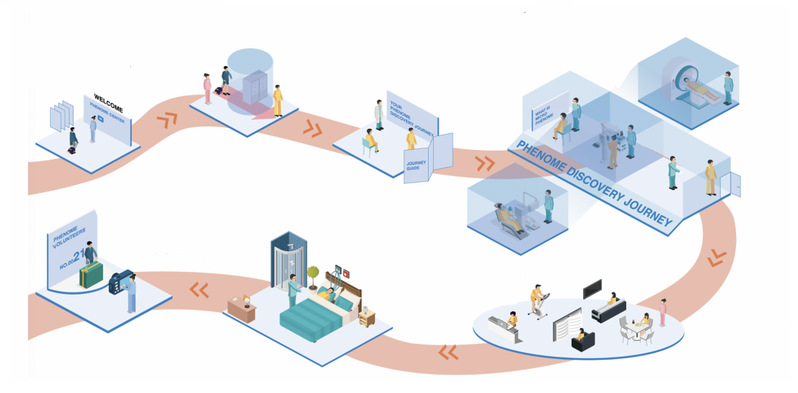
The primary goal of HPP is to draw the world’s first “navigation atlas” for human phenome which illustrates the correlations between tens of thousands of different human phenotypes. By following the atlas, scientists can greatly improve the efficiency of making innovative achievements in life sciences and deepen understanding of various life phenomena. The atlas will also provide new directions and valuable clues for scientists to further analyze the mechanism of complex living systems in the future.
At the 3rd IHPC board meeting, Prof. Li Jin elaborated on the exploratory research on this “navigation atlas” by Chinese scientists. According to Jin, Chinese scientists have drawn a preliminary “navigation map” of human phenome covering and networking more than 1.5 million strong associations among different phenotypes based on Shanghai core cohort studies on residents’ health-related phenotypes.
With the help of the world’s first cross-scale and multi-dimensional phenotyping platform and the automatic full-process big-data phenome platform built in Zhangjiang Fudan International Innovation Center, as of November 19, 2021, more than 730 volunteers aged 20-60 who have lived in Shanghai for years have participated in the cohort study. Each volunteer had stayed for 2 days in phenotyping platform and contributed their data with more than 30,000 phenotypes per person. This enables scientists to obtain more than 3PB phenotypic baseline data in more than 20 categories.
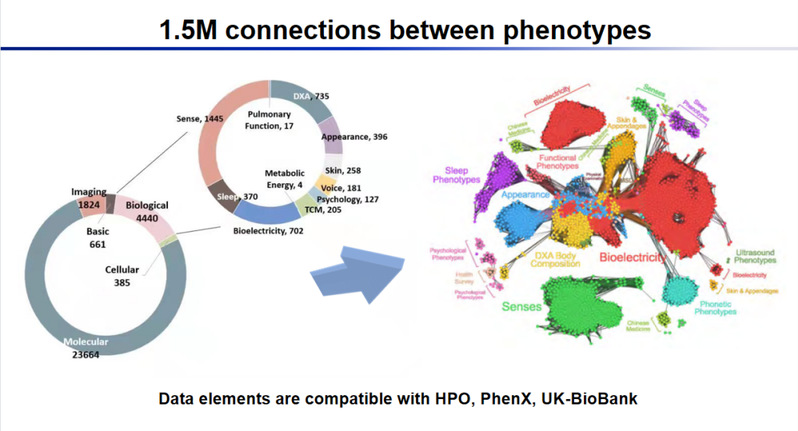
Through the analysis of existing data by multidisciplinary teams, scientists eventually have found more than 1.5 million strong associations, of which about 39% are cross-scale associations, and most of the associations were discovered for the first time. Networking these strong associations, the world first preliminary “navigation atlas” of human phenome has been achieved.
The “navigation atlas”, which is now at the beta testing stage, has become available for scientists and researchers. Many researchers are using this atlas to identify the strong associations of great significance in lab research and practical use.
IHPC Consensus on the Guidelines of Trans-Border Data Sharing and Openness of the Human Phenome Project
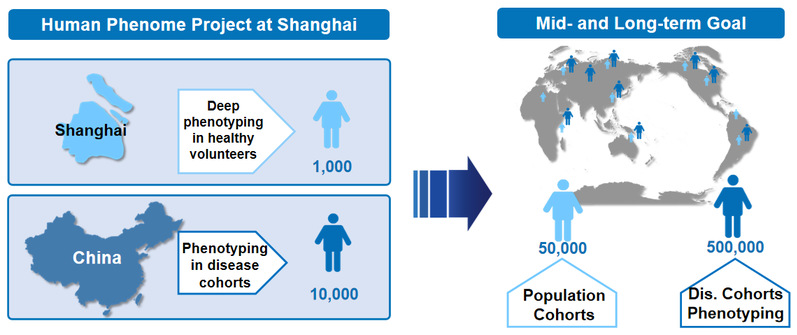
HPP will carry out phenotypic measurements of 50,000 people from different continents with panoramic measurement of more than 100,000 phenotypic indicators per person as well as a specialized study targeting specific phenotypes of over 500,000 people across the world. It’s essential to promote sharing and openness of global scientific research data across borders to achieve this goal, as it is impossible for one team or country to complete this project without collaboration worldwide.
Upholding the principle of security and openness, the members of International Human Phenome Consortium (IHPC) reached at the meeting on the following consensus on guidelines of trans-border sharing and openness of scientific research data of human phenome.
First, the FAIR Principles. The IHPC members shall follow the “FAIR principles” adopted by the world’s major scientific data-sharing institutions —“Findability, Accessibility, Interoperability, and Reusability”. The human phenome research data for trans-border sharing shall be guided by the FAIR principles.
Second, security and compliance. The collection, transmission, preservation, use, sharing, publication, and destruction of scientific research data of the human phenome need to comply with laws and regulations in countries/regions as they concern the different stages of the entire data life cycle.
Third, data standardization. Data standardization is the basis for data sharing and joint research in the International Human Phenome Project. Through the cooperation on international standardization of research data, IHPC would like to facilitate the data sharing and open accessibility of International Human Phenome Project.
Fourth, classification and grading. Different types and levels of data are subject to different sharing and openness principles. In the future, IHPC will contribute to the formation of international standards on human phenome data classification based on consultation and coordination among members.
Fifth, multi-model and scenario-based sharing. IHPC encourages scientific research institutions in various countries to work with a variety of innovative data sharing models in addition to the traditional model of data copying and sharing.
Sixth, follow best practices. IHPC expects scientific research teams to follow the rules and regulations for good scientific practice which are in place in the different countries and regions participating in IHPC.





